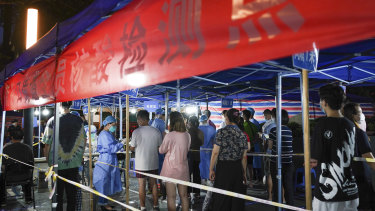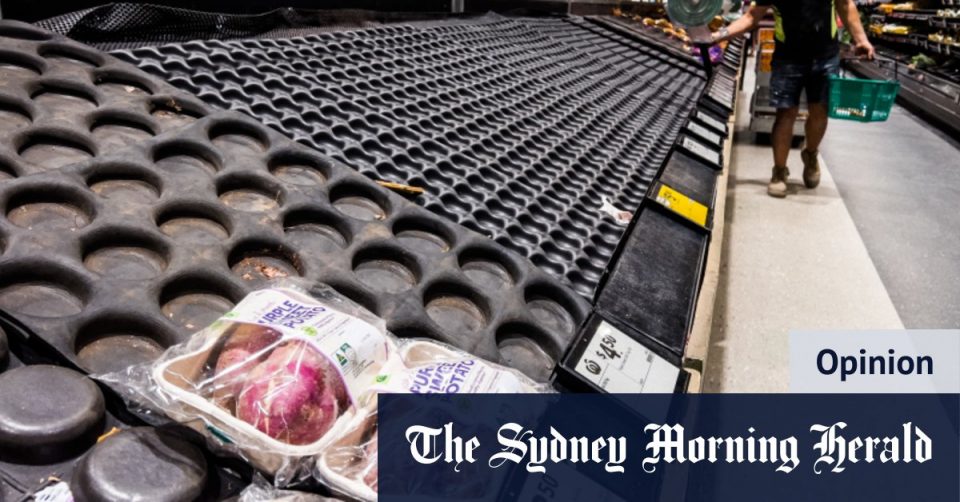New outbreaks in China have seen an entire city of nearly 13 million people forced into extreme lockdown while the operations at the world’s third-largest container port, Ningbo, have been disrupted (again) by an outbreak of COVID in one of its suburbs that is impacting trucking into and out of the port.
China operates seven of the world’s 10 largest container ports so its hardline approach to the pandemic has routinely disrupted international trade, as have the effects of the pandemic and, more recently, an energy crisis, on its factories.

People line up for COVID-19 tests at a testing station in Nanjing in eastern China’s Jiangsu Province.Credit:AP
Similarly, labour shortages due to COVID infections and risk-aversion have impacted US ports and land transport capacity, leading to long queues at ports and lengthy turnaround times for cargo ships and delayed and volatile flows of goods to US companies and consumers.
It’s also seen spikes in shipping and container costs, which soared to as much as 10 times pre-pandemic levels before subsiding somewhat late last year, which in turn is being passed on to companies and their end consumers. Shipping accounts for about 90 per cent of the cross-border transport of goods.
The dislocations to global supply chains coincided with an enormous increase in consumer demand, partly fuelled by the largesse of governments and central banks but also the impact of lockdowns on where consumers could spend their savings – the lockdowns hit travel, entertainment and restaurants particularly hard.
Loading
Disrupted supply and greatly increased and distorted (relative to pre-pandemic spending patterns) demand helped generate the global surge in inflation rates to levels not seen in decade that is now forcing U-turns in the unprecedented, ultra-loose monetary and fiscal policies the major economies deployed in response to the pandemic.
While some of the supply chain pressures and costs captured by the GSCPI may have subsided from their 2021 peaks (the cost of shipping containers from China to the west coast of the US is 30 per cent off its peak) it is obvious that the continuing outbreaks and mutations of COVID and the responses of companies and consumers to the pandemic means there will be no reversion to the pre-pandemic norm, even if the pandemic is ultimately brought under control.
Globalisation, the emergence of China as the world’s low-cost manufacturing base and the seamless movement of goods and services around the world before 2020 enabled companies to be comfortable pursuing the “just in time” low-inventories production strategies pioneered by the Japanese in the 1970s.
After the experience of the past two years – of both the pandemic and the increasing tensions between China and the West – corporate strategies will shift from that just in time, lean manufacturing approach to one of “just in case.”
Loading
They will hold more inventory and source or manufacture closer to home, either absorbing the increased costs or, for those with pricing power, passing them on to consumers.
It is likely that companies – the transport companies and the factories and customs they connect – will already be responding to their experiences, which probably explains why the GSCPI started to decline towards the end of last year.
It is improbable, however, that the index will fall back from its peak of four standard deviations from its long-term average to pre-pandemic norms.
There are supply chain experts who believe that a new and functioning normal for global supply chains will be achieved within the next two years. Whenever that new normal is achieved, and whatever it looks like, it appears certain it will look and operate differently, and cost more, than the one the pandemic has displaced.
The Morning Edition newsletter is our guide to the day’s most important and interesting stories, analysis and insights. Sign up here.


